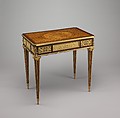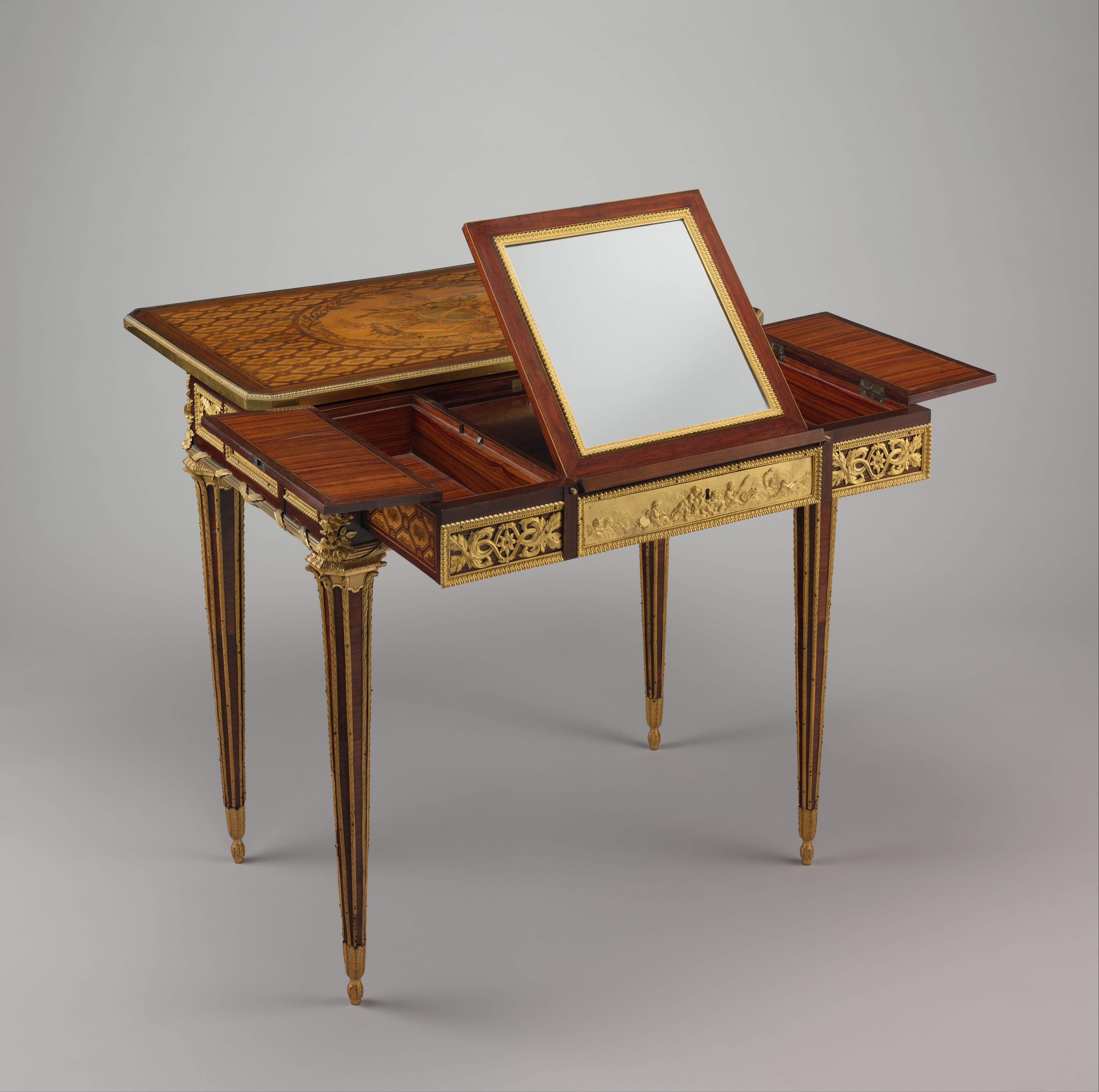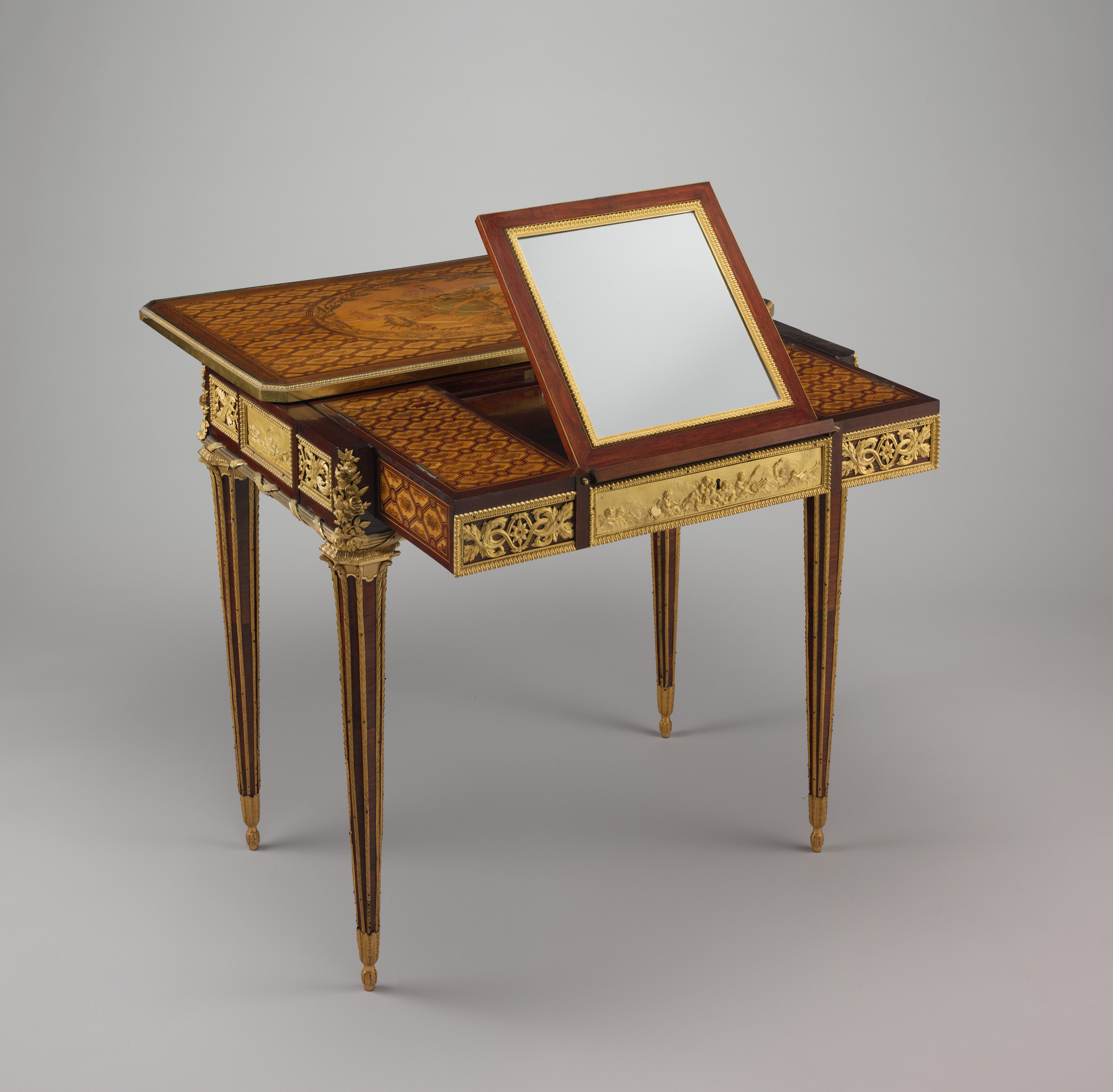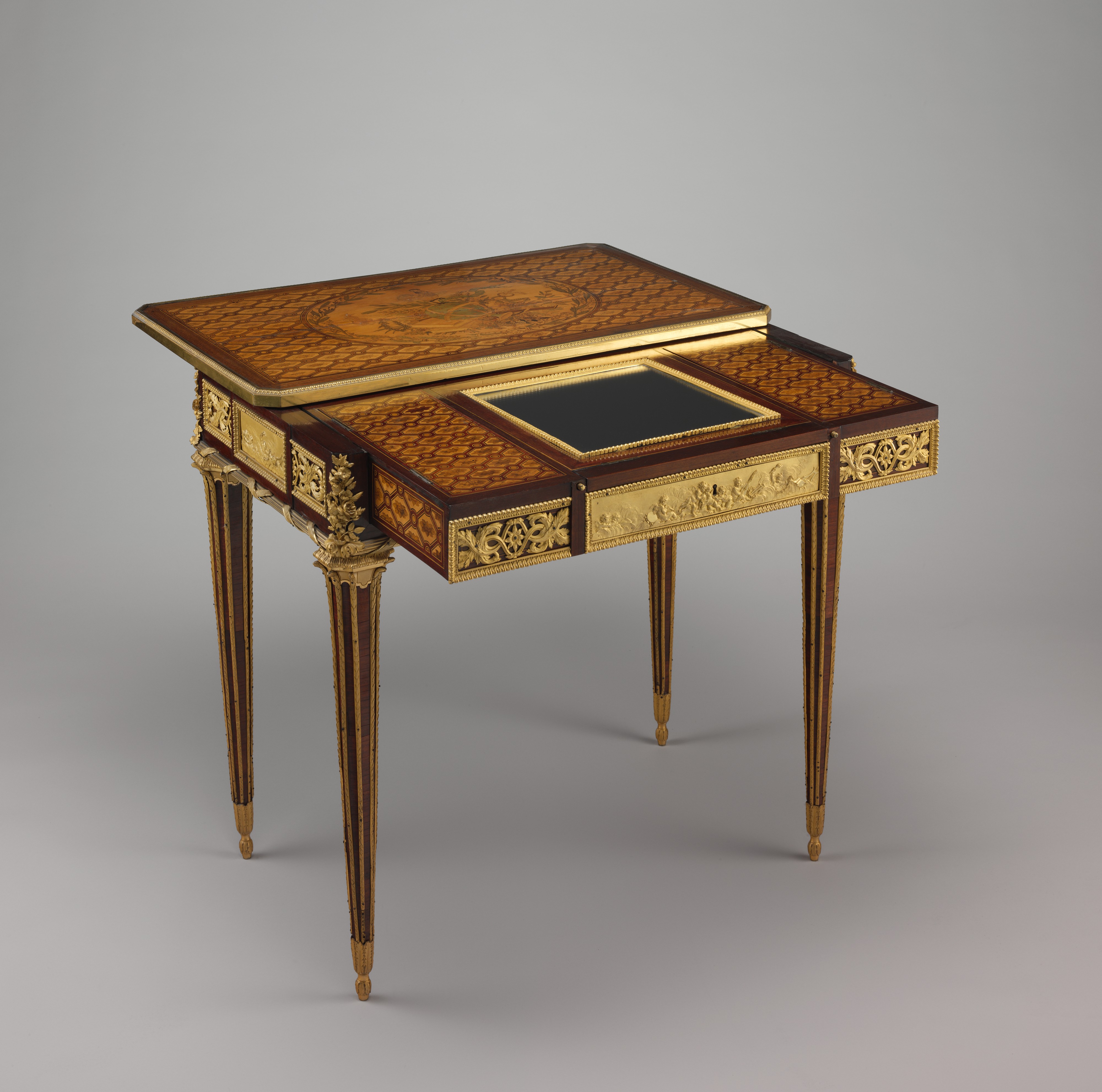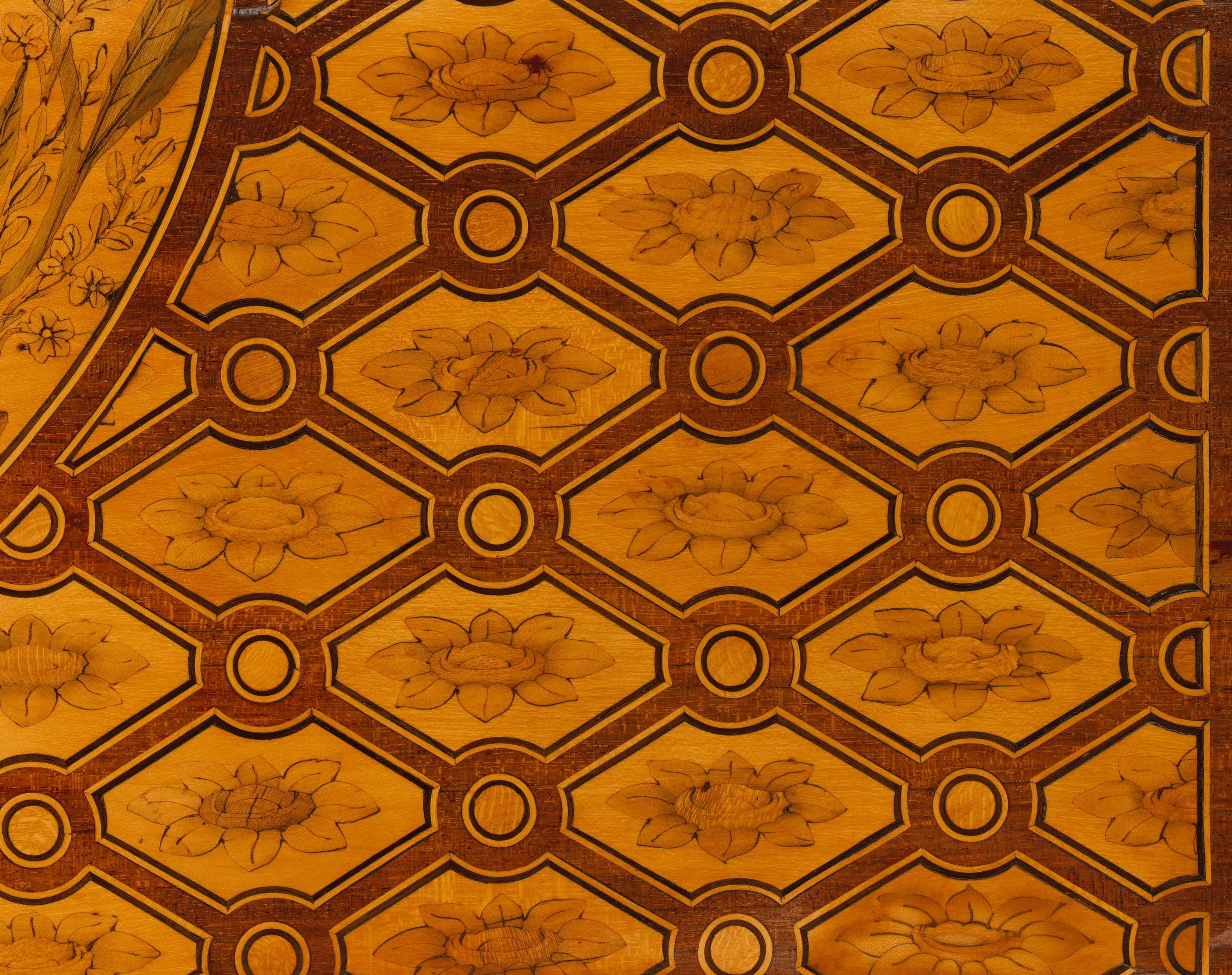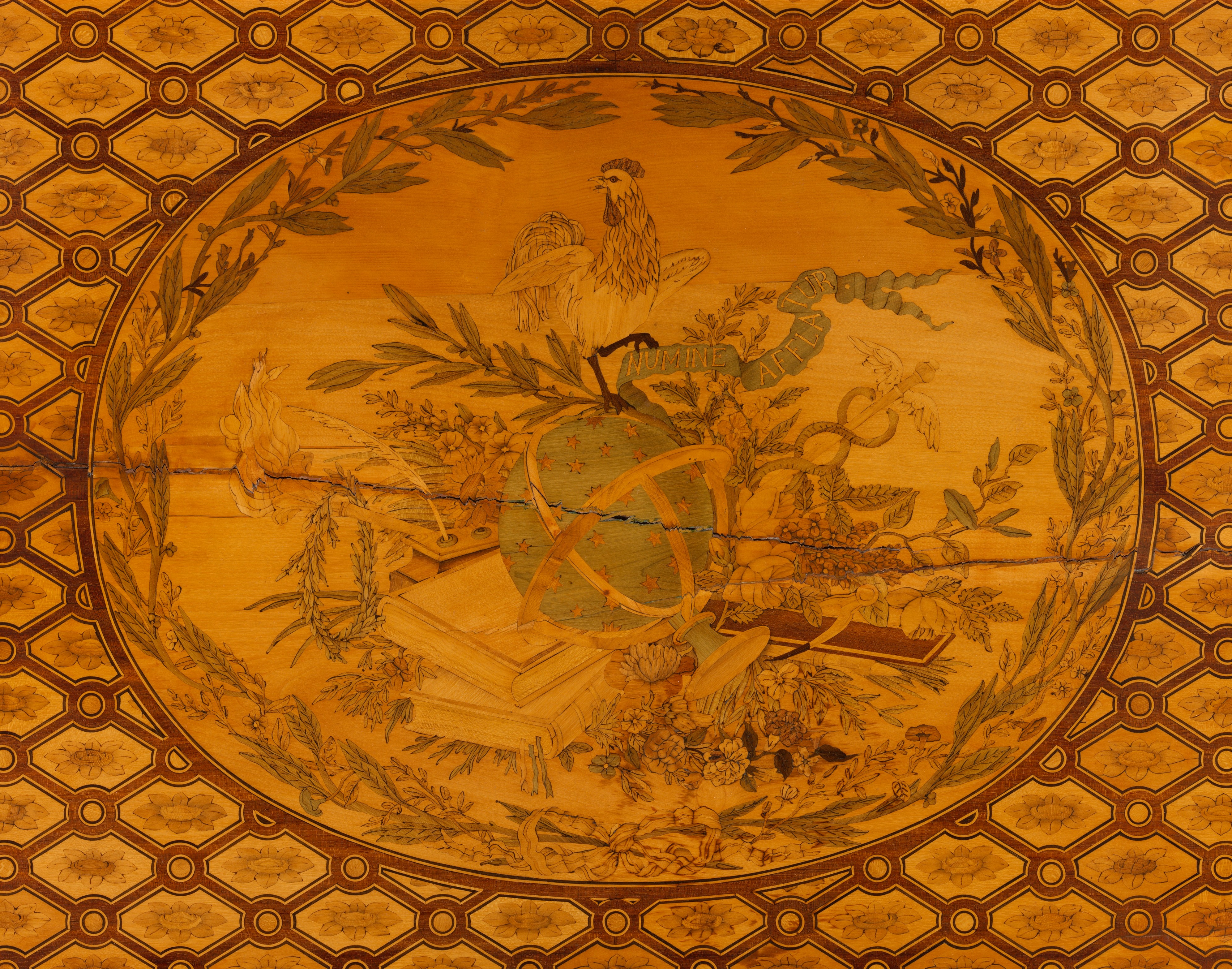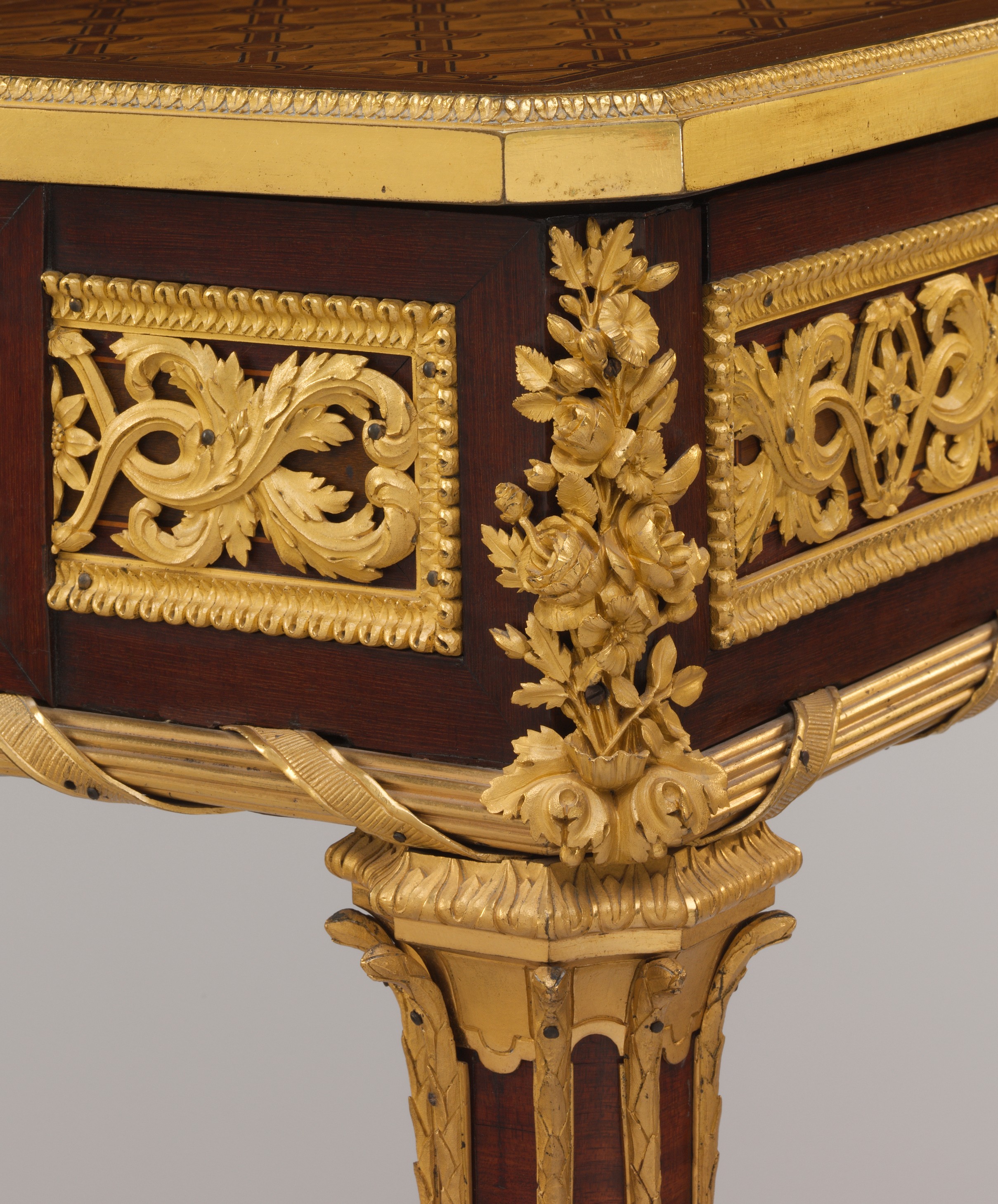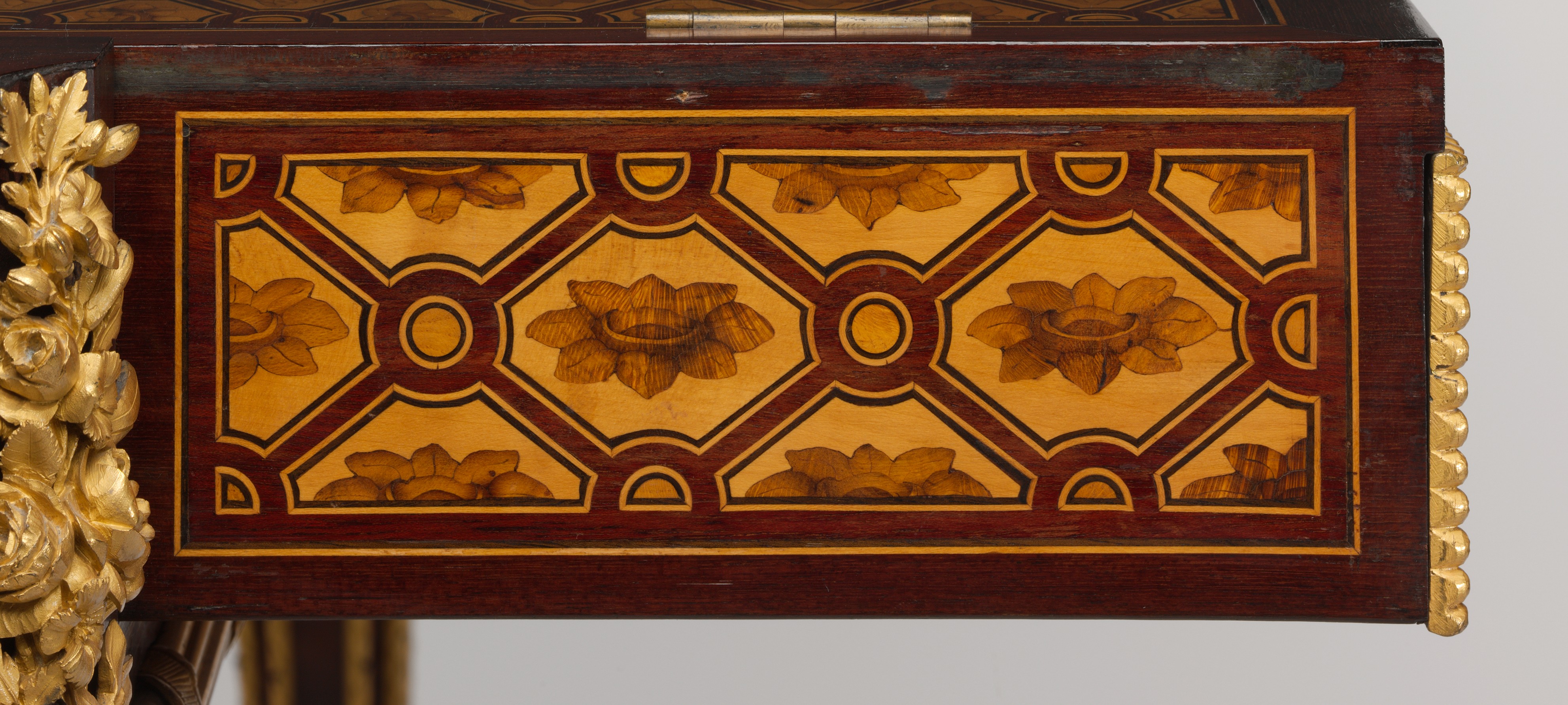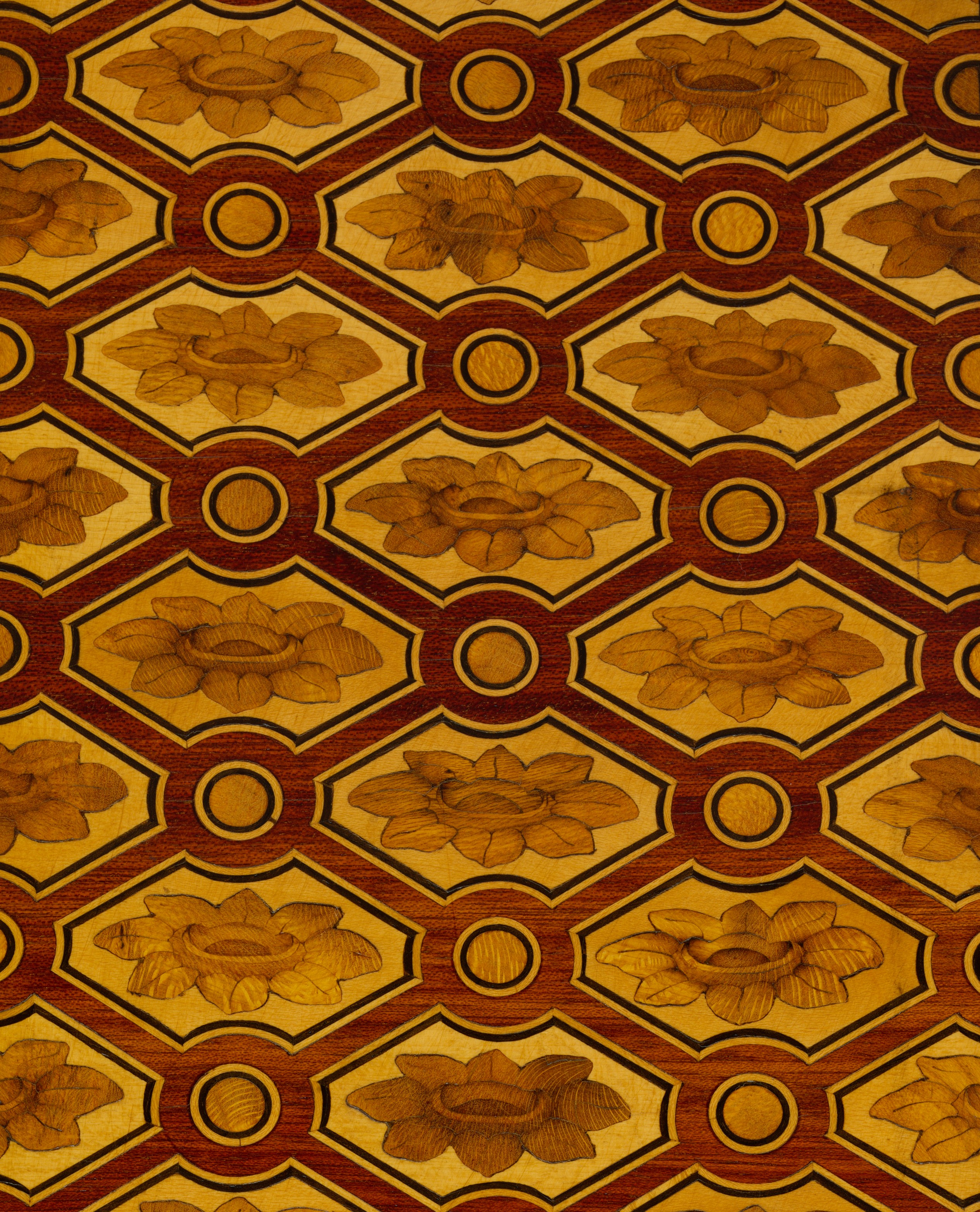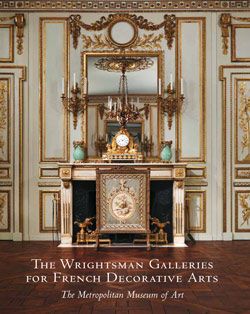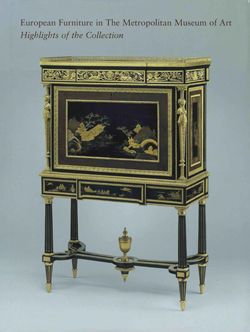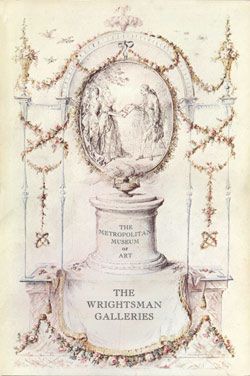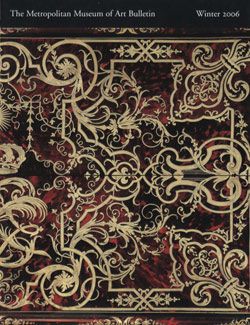Mechanical table
Jean Henri Riesener French
Allegorical frieze attributed to Louis Simon Boizot French
and Nicolas-Antoine Damerat French
Described in an inventory of 1789 simply as a writing table, this wonderful piece offered its original owner, Marie-Antoinette, many more options than that. Made by Jean-Henri Riesener in 1781 for the queen’s Grand Cabinet Intérieur at Versailles, the table is fitted with a mechanism that allows the top to slide back and, at the same time, the main drawer to move forward. The central compartment of the drawer encloses a velvetlined writing surface that can be ratcheted up to form a bookstand and reversed to show a mirror. The marquetry surface on top is richly embellished with a pattern of trelliswork enclosing rosettes frequently used by Riesener on furniture for Marie-Antoinette. The central medallion encloses a trophy with the attributes of Poetry and Literature and the Latin motto Numine afflatur (“inspired by the divine nod”). This exquisite marquetry decoration, now faded, must originally have confirmed an eighteenth-century description of the technique as “painting in wood.” Judging from the well-preserved marquetry on the lids of the inner compartments, which can be released by pressing a small button on the drawer front, and on the outer sides of the drawers, visible when the table is open, the exquisite design of the top must have been very colorful. This the cabinetmaker achieved through a clever selection of contrasting woods and the use of organic and, therefore, not very permanent dyes to expand the natural palette of the wood. The table is mounted with gilt-bronze moldings around the top, along the lower edge of the frieze, and running down the tapering legs. Gilt-bronze plaques in relief adorn the drawer front and the sides. This multifunctional table mécanique was sent to the Château de Saint-Cloud in 1785, where it was placed in Marie-Antoinette’s dressing room and later used there with a daybed, bergère, and fire screen by Jean-Baptiste-Claude Sené, now also at the Museum.
This image cannot be enlarged, viewed at full screen, or downloaded.
This artwork is meant to be viewed from right to left. Scroll left to view more.
